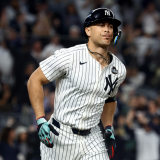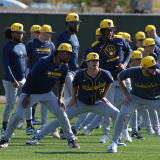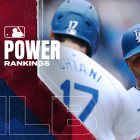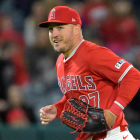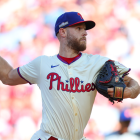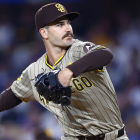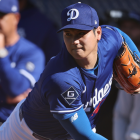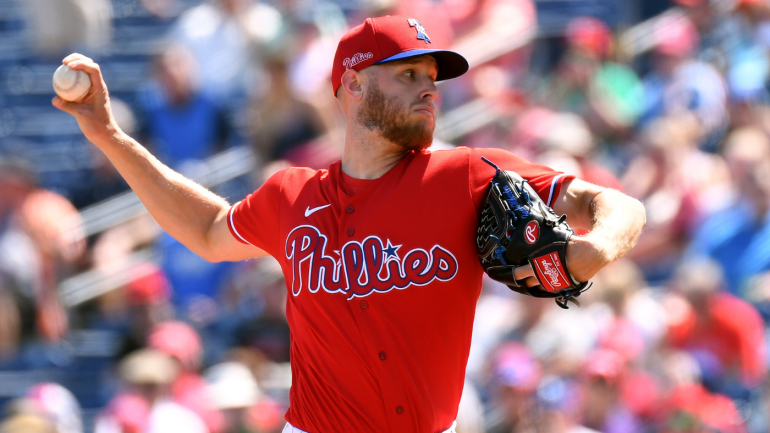
The 2020 baseball season will be unlike any other season in MLB history. It will be only 60 games because of the ongoing COVID-19 pandemic, there will be a universal DH, and extra innings will start with a runner on second base to speed things along. Opening Day is scheduled for July 23. This will be the shortest MLB season since the turn of the 20th century and it's not even close.
What will happen when the season begins? No one knows, really. The hitters might be ahead of the pitchers and thus a lot of runs will be scored, or maybe it'll be the opposite, with runs hard to come by because pitchers are ahead of the hitters. Baseball shut down for more than three months not long after spring training started. What happens next is anyone's guess.
What we do know is some players perform differently at different times of the year. We've all seen players with a history of starting slowly before getting hot late, and vice versa. Last week we looked at three hitters with a recent history of performing very well in August and September. This week we're going to examine three pitchers with a history of doing the same.
The Cleveland pitching development machine turned a good but not truly great prospect into an impact big-league starter. The Indians acquired Mike Clevinger from the Angels for Vinnie Pestano in August 2014 and, three years later, he posted a 3.11 ERA in 121 2/3 innings in the big leagues. Clevinger's emergence helped make Trevor Bauer and Corey Kluber expendable.
Over the last three seasons Clevinger, now 29, has been at his best late in the season. That was especially true last year, when he allowed no more than two earned runs in eight of his final nine starts after battling injuries in the first half. His 2017-19 numbers:
| IP | ERA | Opp. AVG/OBP/SLG | |
|---|---|---|---|
August and September | 191 1/3 | 2.26 | .199/.271/.332 |
All other months | 256 1/3 | 3.48 | .228/.305/.369 |
The Indians used Clevinger in relief late in 2017 in preparation for his postseason role, though he was excellent as a starter in August and September that year, pitching to a 1.32 ERA in seven starts. Clevinger was the full-time starter the last two seasons. No skewed numbers there.
Clevinger likely would have opened this season on the injured list had it started as scheduled on March 26. He had arthroscopic knee surgery in February and threw his first spring training bullpen session on March 9. That would have put his 2020 debut sometime around mid-April, barring no setbacks.
Now, because of the shutdown, Clevinger is fully healthy and ready to go for Opening Day. He is a full participant for Summer Camp and will be in the rotation when the 60-game season begins. Given his tendency to be at his best in August and September, the timing works out well for the Indians.
For my money, Mets right-hander Jacob deGrom is the best pitcher in baseball. Not exactly a controversial statement, I know, but there are other worthy candidates out there, including in deGrom's own market (Gerrit Cole). The reigning two-time NL Cy Young award winner has a seemingly unmatched combination of stuff, command, and tenacity.
The fact he won the Cy Young last year can make it hard to believe deGrom was sitting on a 3.71 ERA as late as May 31, which is good but not Cy Young worthy. He then kicked it into high gear and was off the charts good the rest of the year. In 2018, deGrom never had an ERA north of 1.90 after April, yet he was still better late in the season than he was early on.
Here are deGrom's numbers the last two years. As good as he was the first four months of the season -- and he was great -- he was even better than the stretch in the season's final two months:
| IP | ERA | Opp. AVG/OBP/SLG | |
|---|---|---|---|
August and September | 146 2/3 | 1.60 | .176/.216/.252 |
All other months | 174 1/3 | 2.30 | .214/.267/.324 |
Outstanding all the time, clearly, but deGrom has been at his very best late in the season the last two years. It wouldn't be wrong to say his dominant Augusts and Septembers put him over the top and in the Cy Young race. That was certainly true last year, when the Cy Young field was muddled going into the second half, and deGrom separated himself from the pack.
DeGrom turned 32 last month, and while he's been (mostly) healthy throughout his MLB career, he's approaching the age where a little extra rest here and there wouldn't hurt. Only Justin Verlander (643) has thrown more innings than deGrom (622 1/3) the last three seasons. Because of the shutdown, I reckon deGrom feels much more fresh physically right now than he usually does in July.
Check out @JdeGrom19’s first bullpen of #SummerCamp.
— New York Mets (@Mets) July 3, 2020
More bullpens 👉 https://t.co/M6CkzjVJ2P pic.twitter.com/BDVFWzhFlV
Hall of Famers Randy Johnson and Greg Maddux are the only pitchers in history to win three consecutive Cy Youngs (they each won four straight), and deGrom has a chance to join them this season. The 60-game season will make things a little weird, but deGrom is typically at his best in August and September. The short mad dash season might be right in his wheelhouse.
As deGrom stormed to his first Cy Young in 2018, he was arguably the second best starter in his own rotation in the second half. DeGrom threw 93 2/3 innings with a 1.73 ERA following the 2018 All-Star break. Zack Wheeler, now with the NL East rival Phillies, had a 1.68 ERA in 75 innings in the second half that year. The Mets had quite the 1-2 punch down the stretch.
Injuries, including Tommy John surgery, sabotaged Wheeler's 2015-17 seasons. He's been healthy the last two years though -- his 377 2/3 innings from 2018-19 are 12th most in baseball -- and he was much better in the second half the first each season. That was especially true the final two months. Here are Wheeler's numbers from 2018-19:
| IP | ERA | Opp. AVG/.OBP/.SLG | |
|---|---|---|---|
August and September | 133 | 2.23 | .225/.275/.328 |
All other months | 244 2/3 | 4.41 | .251/.308/.373 |
In 20 starts the last two Augusts and Septembers, Wheeler allowed no more than one run in 12 of them. On two other occasions he allowed only two runs. DeGrom also had 12 starts with no more than one run allowed the last two Augusts and Septembers. He also had three other starts with two runs allowed, one more than Wheeler. That's how good Wheeler has been late the last two years.
Wheeler and Mets GM Brodie Van Wagenen traded barbs this past offseason, with Van Wagenen saying Wheeler turned "two good half-seasons" into a five-year contract worth $118 million. That's a little disingenuous -- Wheeler hasn't been terrible in the first half -- but there is a kernel of truth there too. The Phillies signed Wheeler hoping they get August and September production all season.
Given his injury history and workload the last two seasons, the shutdown may have come at a good time for Wheeler, who is still considering the possibility of opting out of the 2020 season. Considering how good Wheeler has been late in the season the last two years, him heading into this 60-game season with his body presumably feeling as good as its felt in a while should excite the Phillies faithful.
![[object Object] Logo](https://sportshub.cbsistatic.com/i/2020/04/22/e9ceb731-8b3f-4c60-98fe-090ab66a2997/screen-shot-2020-04-22-at-11-04-56-am.png)









